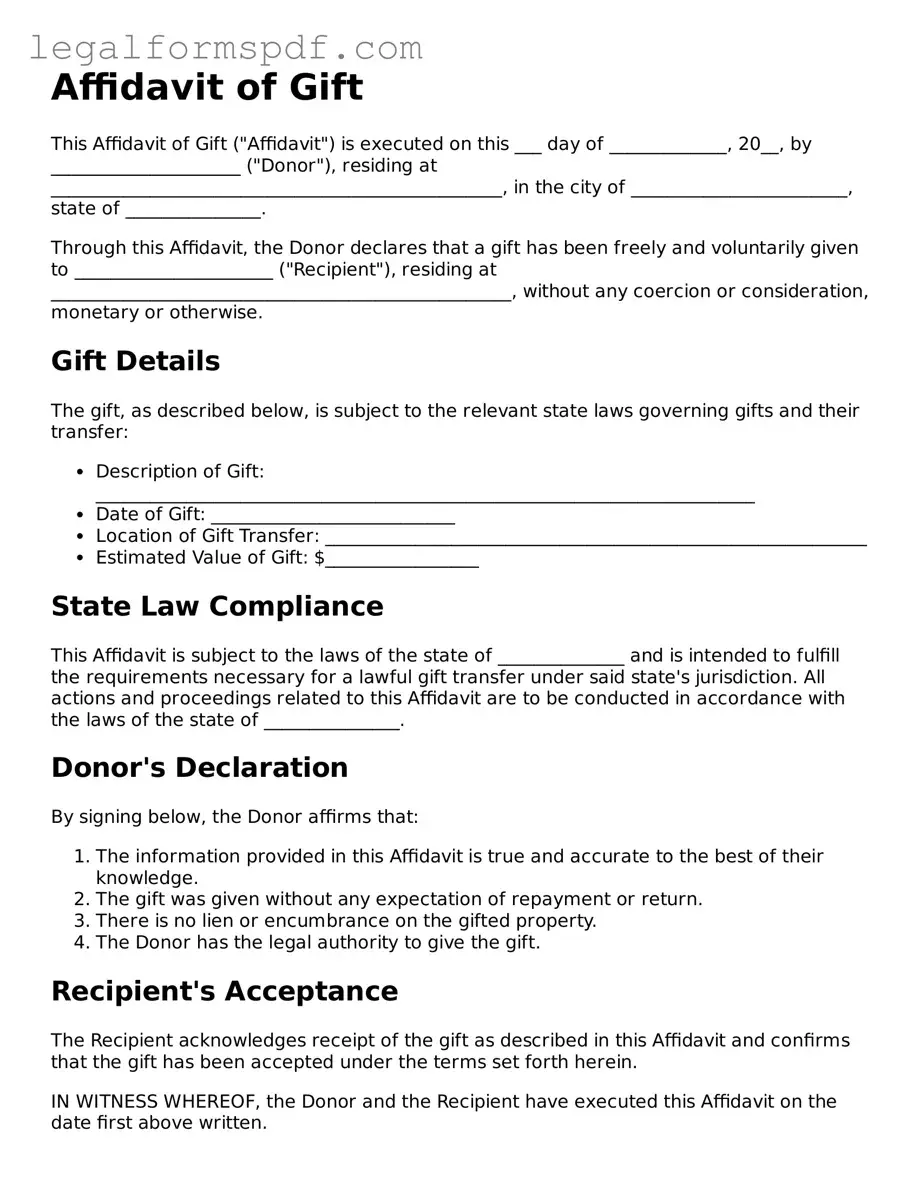Affidavit of Gift
This Affidavit of Gift ("Affidavit") is executed on this ___ day of _____________, 20__, by _____________________ ("Donor"),
residing at __________________________________________________, in the city of ________________________, state of _______________.
Through this Affidavit, the Donor declares that a gift has been freely and voluntarily given to ______________________ ("Recipient"),
residing at ___________________________________________________, without any coercion or consideration, monetary or otherwise.
Gift Details
The gift, as described below, is subject to the relevant state laws governing gifts and their transfer:
- Description of Gift: _________________________________________________________________________
- Date of Gift: ___________________________
- Location of Gift Transfer: ____________________________________________________________
- Estimated Value of Gift: $_________________
State Law Compliance
This Affidavit is subject to the laws of the state of ______________ and is intended to fulfill the requirements necessary for a lawful gift transfer
under said state's jurisdiction. All actions and proceedings related to this Affidavit are to be conducted in accordance with the laws of the state of _______________.
Donor's Declaration
By signing below, the Donor affirms that:
- The information provided in this Affidavit is true and accurate to the best of their knowledge.
- The gift was given without any expectation of repayment or return.
- There is no lien or encumbrance on the gifted property.
- The Donor has the legal authority to give the gift.
Recipient's Acceptance
The Recipient acknowledges receipt of the gift as described in this Affidavit and confirms that the gift has been accepted under the terms
set forth herein.
IN WITNESS WHEREOF, the Donor and the Recipient have executed this Affidavit on the date first above written.
Donor Signature
___________________________________
Print Name: _________________________
Recipient Signature
___________________________________
Print Name: _________________________
Witness Signature (if required)
___________________________________
Print Name: _________________________
